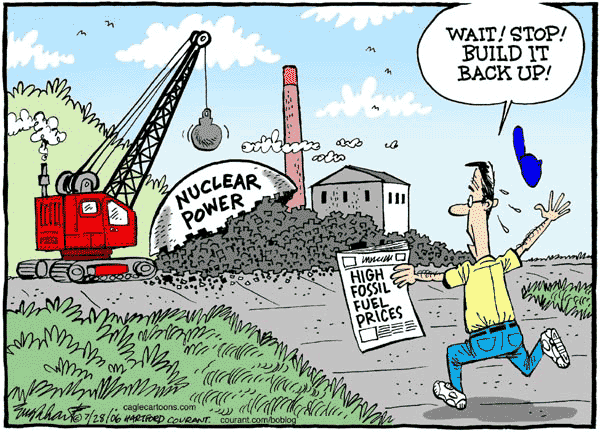 This the final article in the SA Mines & Energy Journal series on nuclear energy (issue 24, pg 34), about the economic bottom line for nuclear. Ben Heard, my co-author, has also blogged about this on DecarboniseSA. And if you want a second opinion, read what Columbia University’s Jeff Sachs has to say (one of the smartest economists out there — I’d strongly recommend his 2011 title “The Price of Civilization“).
This the final article in the SA Mines & Energy Journal series on nuclear energy (issue 24, pg 34), about the economic bottom line for nuclear. Ben Heard, my co-author, has also blogged about this on DecarboniseSA. And if you want a second opinion, read what Columbia University’s Jeff Sachs has to say (one of the smartest economists out there — I’d strongly recommend his 2011 title “The Price of Civilization“).
——————
It does not take long in any discussion of nuclear power before people want to talk turkey. How much does nuclear power cost?
It’s odd that when it comes to nuclear power alone, some environmentalists morph into incredibly hard-nosed economic rationalists. If the solution can’t pay its own way from the get go, bad luck.
That suggests a misunderstanding of not so much nuclear economics, but of energy economics more generally. It also hints at an ideological position if the same criteria are not applied elsewhere.
In considering nuclear at all, we are looking to replace baseload fossil fuels at 100s or over 1,000 MW at a time. Take your pick of technology, including modern fossil fuels: that is never going to be a cheap task. There is no way around the “sticker shock” of a modern power facility.
If we want new, large-scale energy generation in Australia, there is a large price tag, comfortably in the billions of dollars range. If, as we would argue, response to climate change demands that any new baseload is zero-carbon generation, then the options are (currently) restricted to the more expensive end of the range for capital costs (fuel is cheap or free for these technologies).
So, what, in that context, can low-carbon options offer in terms of up-front cost? Let’s take some real-world examples (for details of the following calculations, see TCASE 15: Comparison of four ‘clean energy’ projects).
If we take the oft-quoted Olkiluoto nuclear new build in Finland (oft-quoted because it is suffering major cost and time over-runs), we find that the new EPR design, with 1600 MWe of generation capacity, looks to be coming in at a cost of EU6.4 billion. That normalises to $6.0 bn per GWe when capacity factors are accounted for.
.jpg)
Dome 3 being lowered onto the Olkiluoto nuclear power plant in Finland. Cost is $6 billion per GWe, but with very high capacity factor.
A large (600 MWe peak) planned wind farm in South Australia, with a proposed 120 MWe biomass generation as back-up, will cost $1.2 billion, plus and extra $0.2 billion for the connecting infrastructure. That’s about $6.9 billion per GWe.
When we turn and face the sun,costs jump. Based on the proposed Moree Solar Farm, this large solar PV facility with no storage or back-up (i.e. not a true baseload solution) comes in at $19.6 billion per GWe. A concentrating solar thermal plant (based on the Spanish Gemasolar plant) with molten salt storage back-up can be had at a cost of $25.1 billion per GWe.
The lesson is clear.
Filed under: Nuclear, Policy | 2 Comments »






.png)





